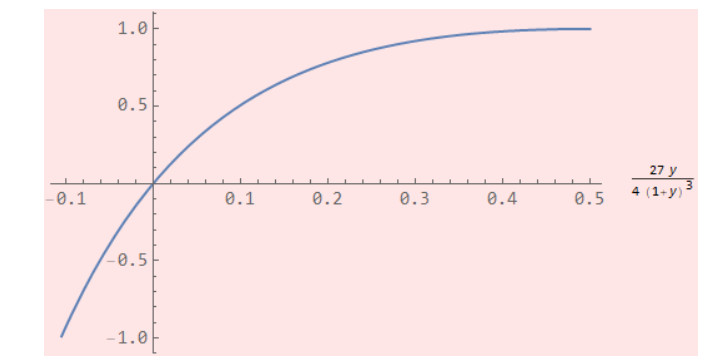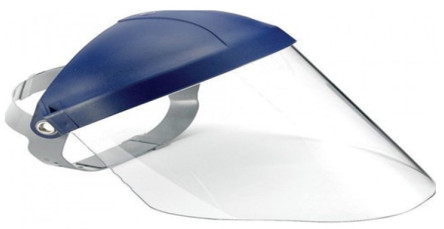1.
Introduction and outline
Let N be the set of natural numbers with N0=N∪{0}. For n∈N0, the following harmonic-like numbers are given by partial sums:
● The classical harmonic number and its quadratic counterpart
● Skew harmonic number and its quadratic counterpart
● Alternating harmonic number and its quadratic counterpart
Among them, there are the following simple but useful relations:
Harmonic numbers and their variants have been studied since the distant past and are involved in diverse fields (cf. [1,5,6,7,11,17,18]) such as analysis of algorithms in computer science, various topics of number theory, and combinatorial analysis. In this paper, we aim at presenting several algebraic identities about infinite series involving harmonic-like numbers, the binomial coefficient (3nn) in numerators, and a free variable "y".
For n∈N0 and an indeterminate x, the shifted factorials (cf. [3, §1.1])) are usually defined by
Denote by [xm]ϕ(x) the coefficient of xm in the formal power series ϕ(x). Then we can express harmonic-like numbers (see [11,18]) by extracting the initial coefficients of x from the quotients of shifted factorials as below:
There exist many infinite series identities involving central binomial coefficients (see [12,14,19,25]). However, the closed form evaluations for the known series with (3nn) are rare. In a recent paper, Sun [23] reported several remarkable infinite series identities, detected by numerical experimentation. Among them, the following three (see [23, Eqs (2.12), (2.13), and (2.15)]) seem rather challenging:
When making efforts to confirm these three formulae, two substantial novelties emerged. First, not only the harmonic numbers H3n and H2n are separable in the third series, but also independent series involving Hn and On can be evaluated explicitly in closed form (cf. Corollaries 6 and 10). Another surprising novelty (see Theorems 1 and 5) lies in the fact that these series are particular cases of more general algebraic identities containing a free variable "y", corresponding to the convergent rates of these numerical series. To our knowledge, most of the infinite series identities presented in this paper have not appeared previously in the literature.
The rest of the paper is organized as follows. As preliminaries, we shall evaluate, in closed form, three series containing binomial coefficient (3nn), harmonic number Hn and a free variable "y" by integrating Lambert's series. Then in Sections 3–5, three classes of infinite series with harmonic-like numbers will be examined by applying the "coefficient extraction" method (see [8,13,24]) to cubic transformations for the 3F2-series, that result in several algebraic identities about these series and confirm or refine, as special numerical examples, three conjectured identities made recently by Sun [23]. Finally, the paper will end with Section 6, where concluding remarks and further problems are provided.
2.
Lambert series weighted by harmonic numbers
In classical analysis and enumerative combinatorics, Lambert's binomial series are well-known (see Riordan [22, §4.5] and [9,10,16]), which can be reproduced as follows: Let T and τ be the two variables related by the equation τ=T/(1+T)β. Then
As preliminaries, we are going to evaluate, in closed form, three series containing ternary coefficient (3nn) and a free variable "y" by integrating across the above two equations, that will be crucial for demonstrating infinite series identities involving harmonic numbers in the subsequent sections.
2.1. Series with Hn
For "α=0 and β=3", performing the replacement τ→xy/(1+y)3 in Lambert's second series, we can state the resulting equality as
Since the rightmost function is monotone around T=0, it determines an implicit inverse function T=T(x) in the neighborhood of x=0 with particular values "T(0)=0 and T(1)=y".
By expressing the harmonic number Hn in terms of the integral
we can insert Hn in the series (2.2) as follows:
where the change of variable x=T(1+y)3y(1+T)3 has been made so that the integral becomes explicit.
For the sake of brevity, the notation "ρ" will be fixed, throughout the paper, for the algebraic number
The convergence region of the preceding series is determined by
This can be illustrated graphically as below:
By decomposing the integrand into partial fractions
we can explicitly compute the integral
By cancelling the three terms containing ln(1+y) and then making substitution, we find the closed formula for the series as in the theorem below:
Theorem 1 (ρ<y<1/2).
2.2. Series with Hn/(1+2n)
For "α=1 and β=3", performing the replacement τ→xy/(1+y)3, we can rewrite Lambert's first series as
Analogously, by putting the harmonic number Hn inside the series (2.4), we have
By decomposing the integrand into partial fractions
we can explicitly compute the integral
which is simplified into the closed formula as in the theorem below:
Theorem 2 (ρ<y<1/2).
2.3. Series with Hn/n
Alternatively, rewriting Lambert's first series
and letting "α→0 and β=3", we deduce the identity
By inserting Hn in the above series, we obtain an integral expression
In view of the partial fraction decomposition
it suffices to evaluate, for a parameter λ subject to T+λ≠0 for T∈(0,y), the parametric integral
with particular cases
Hereafter, the dilogarithm function (see Lewin [20, §1.1]) is defined for all complex values of z by
By making substitution and then simplifying the terms concerning logarithms and dilogarithms in the resulting expression, we find the explicit formula as in the following theorem:
Theorem 3 (ρ<y<1/2).
where, for simplicity, Θ(y) denotes the sum of five dilogarithmic values
3.
Series with (3nn) and harmonic-like numbers
According to Bailey [3], the classical hypergeometric series reads as
We shall confine ourselves only to examining the series with |z|<1 and none of the parameters in the numerator and denominator being a non-positive integer, which imply that the corresponding series is well-defined and convergent.
There are many transformation and summation formulae for hypergeometric series (see Bailey [3] and Brychkov [4, Chapter 8]) in the literature. In 1928, Bailey [2] discovered an important cubic transformation (see the next section). Half a century later, Gessel and Stanton [15, Eq (5.4)] found the following counterpart
Under the parameter replacements "a→6ax,c→2cx", this transformation can be reformulated as
where "y∈(ρ,12)", or equivalently, 27y4(1+y)3∈(−1,1) so that the series are convergent.
The above transformation is an analytic equality with respect to x in the neighborhood of x=0. Equating the constant terms on both sides yields the algebraic identity below:
As illustrated in the introduction, harmonic-like numbers can be expressed in terms of x-coefficients from quotients of shifted factorials. By examining the coefficients of x across the above equation, we find that the corresponding equation involving harmonic numbers can be written as
The rightmost series admits the closed form expression, as in the lemma below:
Lemma 4 (−4<y<4).
Proof. Recall the beta function (see [21, §16])
We can express W(y) as a definite integral
where the last line is justified by the change of variable √1−x→T. Then the formula in the lemma follows by evaluating the last integral explicitly. □
Therefore, we find the general formula below:
By specifying two parameters, a and c, we deduce four independent series
Combining the above formulae with Theorem 1 and then keeping in mind the equalities
we establish further closed formulae for four series with a free variable "y".
Theorem 5 (ρ<y<1/2).
Numerous infinite series identities with different convergence rates can be derived by assigning particular values for y in Theorems 1 and 5. Five groups of representative examples are recorded as corollaries. In particular, the second formula (b) and the last formula (e) displayed in Corollary 6 confirm (1.1) and (1.2) conjectured by Sun [23, Eqs (2.12) and (2.13)].
Corollary 6 (y→3√3−52 in Theorems 1 and 5).
Corollary 7 (y→√5−2 in Theorems 1 and 5).
Corollary 8 (y→√5−2√5 in Theorems 1 and 5).
Corollary 9 (y→−110 in Theorems 1 and 5).
Corollary 10 (y→7−3√52 in Theorems 1 and 5).
We remark that the second formula (b) and the last series (e) in this corollary refine identity (1.3) conjectured by Sun [23, Eq (2.15)]:
4.
Series with (3nn)/(2n+1) and harmonic-like numbers
Now, we turn to examine Bailey's cubic transformation (Bailey [2, Eq (4.05)])
Under the parameter replacements "a→1+6ax,c→2cx", it can be reformulated as
where, as before, both series converge for "y∈(ρ,12)", or equivalently, 27y4(1+y)3∈(−1,1).
When x=0, the above series becomes the following simpler one:
Instead, the coefficients of x across (4.2) result in the general formula as below:
For brevity, we introduce the notations U(y) and V(y) for the two series:
They are evaluated in closed form by the following lemma:
Lemma 11.
Proof. The first series can be evaluated by computing the integral as follows:
For the second series V(y), by shifting forward the summation index n→n+1, we can rewrite it as
Then, for "α=β=3", perform the replacement τ→xy/(1+y)3 in Lambert's second series
Now multiplying this equation by x12 and then integrating across over x∈[0,1], we can proceed with
By means of integration by parts, we can further compute
After substitution, the second formula in Lemma 11 follows accordingly. □
Therefore, we obtain the following reduced transformation:
By specifying two parameters, a and c in the above equality, we deduce four independent series:
For the above four equations, first replacing U(y) and V(y) by their algebraic values in Lemma 11, and then putting the resulting equations in conjunction with that in Theorem 2, we establish, after some routine simplifications, four closed formulae as in the following theorem:
Theorem 12 (ρ<y<1/2).
By assigning particular values for y in Theorems 2 and 12, we can deduce numerous infinite series identities with different convergence rates. In order to show the variety of implications, we record five representative classes of infinite series values.
Corollary 13 (y→√5−2 in Theorems 2 and 12).
Corollary 14 (y→3√3−52 in Theorems 2 and 12).
Corollary 15 (y→3√2−4 in Theorems 2 and 12).
Corollary 16 (y→15 in Theorems 2 and 12).
Corollary 17 (y→−110 in Theorems 2 and 12).
5.
Series with (3nn)/n and harmonic-like numbers
Under the parameter replacements "a→6ax,c→2cx", Bailey's cubic transformation (4.1) can be reformulated alternatively as
Both series in the above equation converge subject to the same condition "y∈(ρ,12)", or equivalently, 27y4(1+y)3∈(−1,1) (as before).
Equating the constant terms from both sides yields the algebraic identity below
Instead, the coefficients of x result in the following infinite series identity involving a free variable "y" and two linear parameters a and c:
Let U(y) and V(y) stand for the two series
They admit closed formulae as in the lemma below:
Lemma 18.
Proof. The first series U(y) can be reformulated as
Then the closed formula for U(y) in the lemma follows by applying the dilogarithmic equation
For the second series, we can rewrite it by reindexing n→n+1 as
Now specializing Lambert's second series by "α=2 and β=3" and τ→xy/(1+y)3
then integrating twice across this equation, we can proceed with
By substitution, the closed formula for V(y) in the lemma follows consequently. □
Thus, we have the following reduced transformation:
By specifying two parameters, a and c, we deduce four independent series
For these four equations, replacing U(y) and V(y) first by their algebraic expressions and then relating the resulting equations to that in Theorem 3, we find, after some simplifications, four infinite series identities as below:
Theorem 19 (ρ<y<1/2). Letting Θ(y) be defined as in Theorem 3, the following algebraic identities hold:
By assigning five particular values for y in Theorems 3 and 19, five classes of infinite series identities are displayed in the following corollaries:
Corollary 20 (y→√5−2 in Theorems 3 and 19).
Corollary 21 (y→√5−2√5 in Theorems 3 and 19).
Corollary 22 (y→13 in Theorems 3 and 19).
Corollary 23 (y→3√3−52 in Theorems 3 and 19).
Corollary 24 (y→3√2−4 in Theorems 3 and 19).
6.
Conclusions and further comments
By integrating Lambert's series and manipulating the cubic transformations for 3F2-series through the "coefficient extraction method", we have shown several algebraic formulae for infinite series containing binomial coefficient (3nn), harmonic-like numbers, and in particular, a free variable "y". As showcases, three classes of infinite series were examined in detail from Sections 3–5. More variants of these series exist and can be treated analogously. For instance, the transformation formula (3.1) under the replacements "a→1+6ax,c→2cx" becomes
Then by carrying out the same procedure as in the preceding sections, we can establish the algebraic identities for five infinite series, as in the theorem below:
Theorem 25 (ρ<y<1/2). Letting Λ(y) be the function defined by
we have the closed algebraic formulae for five infinite series:
From the algebraic identities exhibited for the series with harmonic-like numbers of the first order, it is natural to ask: what would happen for the corresponding series involving harmonic-like numbers of the second order? Our computations manifested that the resulting expressions are very complex and convoluted, which can be exemplified by the following attempt made by the authors. Extracting the coefficient of x2 across (3.2), we can derive, after a number of reductions and simplifications, the following formulae:
where W(y)andU(y) are as in Lemmas 4 and 18, respectively, and W(y) is given by
There are altogether nine harmonic-like numbers appearing in the above four series
To evaluate the nine corresponding independent "nuclear series", it is necessary to find five similar independent equations. It seems quite a tough problem that the authors failed to arrive at solutions, even though we did succeed in determining the following long and ugly expression involving six terms in dilogarithms (that prevents us from making further simplifications). Perhaps the only value of this formula lies in its existence.
Therefore, to evaluate the series containing binomial coefficient (3nn) and harmonic-like numbers of the second and/or higher orders, one needs to find out different approaches. The interested readers are enthusiastically encouraged to make further explorations.
Author contributions
C. Li: Writing, computation and review; W. Chu: Methodology and supervision. Both of authors have read and approved the final version of the manuscript for publication.
Use of AI tools declaration
The authors declare they have not used Artificial Intelligence tools in the creation of this article.
Acknowledgments
The authors express their gratitude to anonymous referees for their careful reading, critical comments and valuable suggestions that make the manuscript improved substantially during the revision.
Conflict of interest
Prof. Wenchang Chu is the Guest Editor of special issue "Combinatorial Analysis and Mathematical Constants" for AIMS Mathematics. Prof. Wenchang Chu was not involved in the editorial review and the decision to publish this article. The authors declare that there are no conflicts of interest regarding the publication of this paper.










 DownLoad:
DownLoad:











